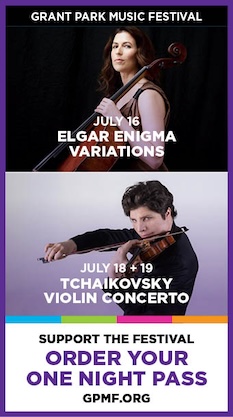Chicago Chamber Musicians go for Baroque

Chicago Chamber Musicians has never been very interested in fixed musical boundaries.
It’s true that contemporary music has always been important during the ensemble’s 23-year history. The group’s annual concerts devoted to living composers have been a highlight of Chicago’s musical year. But CCM has always built its seasons around a solid core of repertoire from the 18th and 19th centuries. Its Grammy nominations tell the tale: one disc featured music of Mozart, the other chamber works by contemporary American composer John Harbison.
But an all-Baroque program, like the one CCM performed Sunday in Evanston, is still something of a surprise from these players. Some of the members are drawn from the Chicago Symphony Orchestra, hardly a Baroque band. In recent decades, performing Baroque music has become a specialty. Groups play on period instruments. They pay scrupulous attention to slimmed-down sonorities and use performance practices that fell out of favor in the 19th century as instruments became more resonant and concert halls grew larger.
CCM didn’t pretend to be a period ensemble in its first-ever all-Baroque concert, which included works by J. S. Bach, Johann Wilhelm Hertel, Vivaldi and Telemann. At the performance in Pick-Staiger Concert Hall, its members played with all the gusto and finesse they bring to Beethoven or Stravinsky, which is what made the performance so satisfying.
Two Baroque favorites opened and closed the concert—Bach’s Concerto for Two Violins, Strings and Continuo in D Minor, BWV 1043, and his Orchestral Suite No. 3 in D Major, BWV 1068.
Jasmine Lin and Joseph Genualdi, who is a co-founder of CCM and its artistic director, were soloists in the Bach concerto, playing with a lean tone and ferocious, light-footed energy. At times Lin’s exuberance overpowered Genualdi’s more mellow sound. But they were attentive to each other’s phrasing in the sweetly haunting slow second movement. Jason Moy’s harpsichord provided crisp underpinning in the fast movements, a role he fulfilled with zest throughout the evening.
Scored for 16 players, the Third Orchestral Suite occasionally sounded tentative when the entire group was playing, as if the musicians were anxious about maintaining proper unison. Barbara Butler’s solo trumpet melodies were strong and sculpted in the gavottes, however, and her colleagues on trumpet, Charles Geyer and Tage Larsen, brought blaze and vigor to the joyful final movement.
The musicians were at their best in the concert’s three works for smaller ensembles. Oboe and trumpet is an unusual combination, but the blend of Butler’s bright trumpet and Michael Henoch’s more burnished oboe was beguiling in Hertel’s Concerto No. 1 for Oboe, Trumpet and Strings. Dennis Michel’s bassoon sounded jaunty and lithe in Vivaldi’s brief Concerto for Bassoon, Strings and Continuo in C Major. Along with cellist Stephen Balderston, he provided a darkly expressive background for Butler, Henoch and oboist Anne Bach in Telemann’s Concerto for Trumpet, Two Oboes and Continuo in D Major.
Posted in Performances

